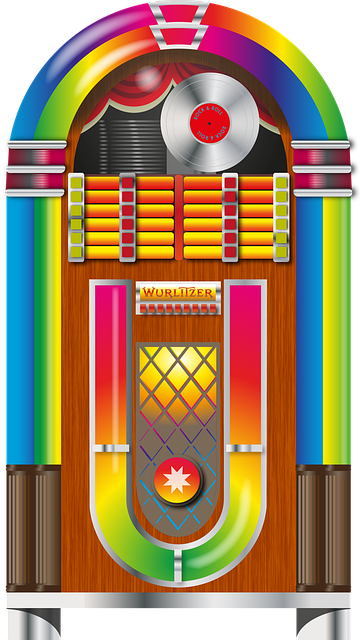By Tim Lambert
Britain Becomes an Affluent Society
The 1950s were a period of prosperity for Britain. There was full employment. At the beginning of the decade many items were still rationed. However rationing was gradually removed. Sweet rationing ended in 1953 and meat rationing followed in 1954.
For the first time Britain became an affluent society. Consumer goods became more common. By 1959 about two-thirds of British homes had a vacuum cleaner. However even by the end of the decade most homes did not have a washing machine or a fridge. (Milk was delivered each day by the milkman). The first laundrette in Britain opened in 1949. Most homes did not have telephones either.
Despite rising living standards in the early 1950s, many homes in Britain still did not have bathrooms and only had outside lavatories. The situation greatly improved in the late 1950s. Many new council estates were built. Some existing towns were designated ‘overspill’ towns. They were greatly expanded to take the excess population of London.
TV was suspended during the Second World War, but it resumed in 1946. By 1956, about 50% of British households had a TV. By 1959, about two-thirds did. At first, there was only one channel, but ITV began in 1955. However, listening to the radio was still popular. The radio comedy show, The Goons, was first broadcast in 1951.
In 1954, Britain’s first TV soap opera was broadcast. It was called The Grove Family. The first Eurovision Song Contest was held on 24 May 1956. Switzerland won.
In the 1950s young people had significant disposable income for the first time. A distinct ‘youth culture’ emerged, first with teddy boys and teddy girls. The first music chart in Britain was published in New Musical Express in November 1952. Number one was ‘Here in My Heart’ by Al Martino. Later in the decade a revolution in music was led by Elvis Presley and Bill Haley.
In the 1950s Lego became a popular toy. Mr Potato Head was invented in 1952. Play-Doh was invented in 1955. Modern plastic hula hoops were introduced in 1958. Barbie dolls were invented in 1959. Meanwhile Dennis the Menace first appeared in the Beano in 1951. Minnie the Minx appeared in 1953. The Bash Street Kids were created in 1954.
New types of sweets were introduced. Bounty (1951), Munchies (1957), Picnic (1958) and Caramac (1959).
The way people shop also changed. The first supermarket in Britain opened in 1948. In the 1950s supermarkets began to replace some small shops.
New foods were introduced. Shreddies went on sale in Britain in 1953. Sugar Puffs and Frosties followed in 1954. Meanwhile fish fingers went on sale in 1955.
Cars became more common in the 1950s but still only a minority of people could afford one. By 1959, 32% of households owned a car. Meanwhile the first parking metres were introduced in Britain in 1958. The first full length motorway, the M1 opened in 1959.
In the 1950s women’s clothes were full and feminine. Frilly knickers were popular. However women only wore stockings. Tights were not invented until 1959. In the 1950s some women wore slip-on shoes called mules. Then in the late 1950s stiletto heels became fashionable for women. For men in the late 1950s shoes with long pointed toes called winkle pickers were popular.
Most people in the 1950s could not afford a foreign holiday but some stayed in holiday camps. Others went to British seaside resorts.
British Society in the 1950s
Following the 1944 Education Act, all children had to sit an exam called the 11 Plus. Those who passed went to grammar schools while those who failed went to secondary modern schools. In 1948, the school leaving age was raised to 15
Medicine made advances in the 1950s. Smog (a mixture of smoke and fog) killed many people in cities like London. The Clean Air Act of 1956 did much to reduce air pollution. Meanwhile in 1954, Joseph Murray performed the first kidney transplant. It was not only the first kidney transplant but also the first successful organ transplant. Jonas Salk introduced a vaccine for smallpox in 1954.
Britain in the 1950s was a sexist society. However things were beginning to change for women. In 1955 Barbara Mandell became the first woman newsreader on British TV. In 1956 Rose Heilbron became the first woman judge in Britain. In 1958 Hilda Harding became the first woman bank manager in Britain.
In the 1950s large numbers of West Indians arrived in Britain. Also from the 1950s, many Asians came. In the late 20th century Britain became a multi-cultural society. However they met with prejudice from many people. Racism was common.
Punishments in the 1950s
In the 1950s Britain still had capital punishment. Derek Bentley was hanged in 1953. He was pardoned in 1958. In 1955 Ruth Ellis became the last woman to be hanged in Britain. Her execution was controversial. In 1957 a compromise was reached on capital punishment. The Homicide Act abolished hanging for certain kinds of murder. It was still allowed for murder during a theft, by shooting, or explosion. Capital punishment was also kept for the murder of a police officer or prison officer while on duty. A person who was convicted of more than one murder could also be hanged.
As well as capital punishment, corporal punishment was normal in the 1950s. Nearly all schools used the cane. Teachers also hit children with rulers or with their hands. Parents sometimes used implements, like belts, slippers, hairbrushes, and wooden spoons.
The 1950s was also the era of the Cold War, a standoff between the West and the Communist Soviet Union. Britain exploded its first atomic bomb in 1952. However, the Suez Crisis of 1956 proved that Britain was no longer a superpower.
